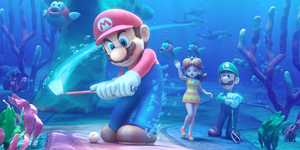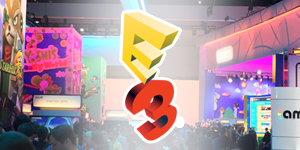Extra: Borrowing Mario
Mario is a busy guy. When he’s not saving princesses, he’s kart racing, playing tennis, defeating viruses in a lab coat, partaking in giant board game parties – and that’s just in Nintendo’s own games. The Mushroom Kingdom icon has quite the packed schedule and Nintendo is not shy about letting him, or its other franchises, dabble in the world of third-party games. This is most recently evident with yesterday’s news of Mario and Zelda characters in the Wii U edition of Scribblenauts Unlimited, along with the inclusion of Nintendo costumes in Namco Bandai’s Tekken Tag Tournament 2: Wii U Edition. However, this asset sharing with third parties is nothing new. In fact, going back to the GameCube days, Nintendo has often loaned out its key characters as a way to help boost sales of third-party titles on its platforms.
Simply put, everybody loves fan service. When a game includes some of your favorite publisher’s characters, even if that game is not necessarily from the company itself, you will at least be curious. That curiosity can then lead to an increase in sales. Arguably the best example of this was the inclusion of Link in the GameCube version of Soul Calibur II. While each system’s version of the fighter did include an exclusive character, the Hero of Time was by far the most notable addition. Link was arguably not only the most iconic of the console-special characters, but he also had the advantage of perfectly fitting into the world of Soul Calibur. As such, Link’s appearance helped the GameCube version outsell its PlayStation 2 and Xbox siblings, going as far as to make it Namco’s top-selling SKU of its release year (2003). This is particularly impressive when you realize that in 2003, the GameCube was third place in the console wars. Sales of the system were 700,000 units behind the Xbox and a whopping 15 million behind the PlayStation 2.
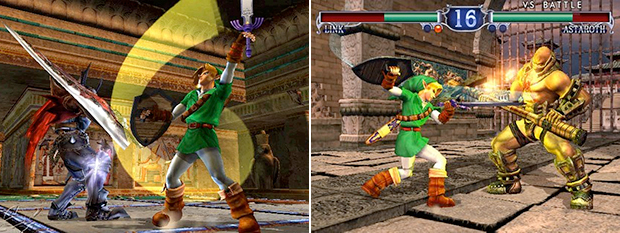
Seeing the success of Soul Calibur II, Nintendo expanded the idea. The logic was sound: Namco saw huge sales on GameCube, which meant it was more likely to support the system going forward. If other publishers could see similar success, then they too would be more likely to bring their games to Nintendo platforms. By simply throwing other publishers a bone with Nintendo cameos, perhaps the GameCube’s weak third-party support could finally turn around.
For the second go-round, Nintendo teamed up with Electronic Arts. This led to Mario, Luigi, and Princess Peach as playable characters in both NBA Street V3 and SSX On Tour, as well as the inclusions of both the full Super Punch-Out!! game and a playable Little Mac in Fight Night Round 2. The additions were certainly goofier than Soul Calibur II, especially when you had moments that sent a plump Mario dunking over the likes of Kobe Bryant. Unfortunately, these tie-ins did not resonate as strongly with gamers. While sales of the GameCube version of NBA Street V3 were significantly higher than the sales of NBA Street Vol. 2 on GameCube, they did not surpass or even match the sales of the PS2 and Xbox versions. Similarly, in their first months on the market, the GameCube versions of both SSX On Tour and Fight Night Round 2 saw weaker sales than the PS2 and Xbox versions.
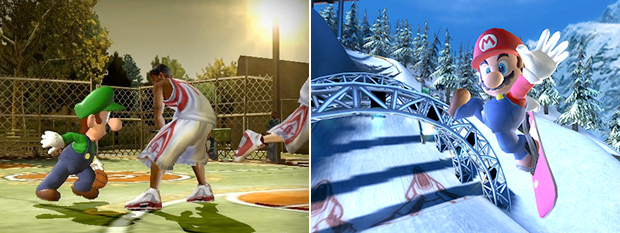
Whether the lack of success with the EA partnership was a direct reason or not, Nintendo recoiled and ceased sharing its characters with other publishers for a number of years. In fact, even when third-party publishers approached Nintendo with an idea, they ended up not getting their wish. For example, Activision and longtime Nintendo platform supporter Vicarious Visions once approached Nintendo about including Samus and Link in the Wii version of Marvel: Ultimate Alliance. As reported by Unseen 64, a beta version featuring the characters did exist, but was ultimately nixed.
Nintendo was similarly tepid about sharing its hot new Mii characters after the successful launch of the Wii. Even though the Wii was released in November 2006, third parties reportedly did not have access to Mii development tools until sometime after March 2007. Luckily, Nintendo came to its senses and realized the benefits of including unified avatars across all Wii games. Sega’s Japan-only Pachinko: Sammy’s Collection was the first third-party Wii game to include Miis when it launched in May 2007. However, North Americans did not begin to see Miis in third-party Wii games until EA’s FIFA Soccer 08 hit stores in September 2007.
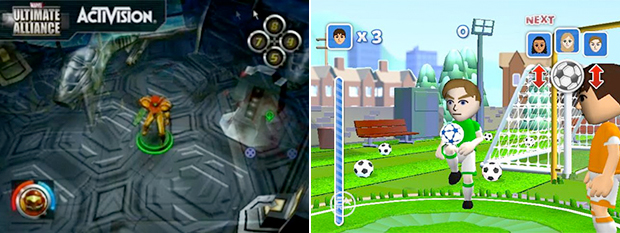
Since then, Nintendo’s third-party support has been mixed. Sega saw huge success with the Mario & Sonic at the Olympic Games franchise on Wii, which was co-developed by Nintendo and clearly leaned heavily on the inclusion of Mushroom Kingdom inhabitants. Perhaps fueled by the success of the series, as well as a desire to bring stronger third-party support to the 3DS and upcoming Wii U, Nintendo is now taking a second crack at allowing its characters in other games. Dead or Alive Dimensions for 3DS included a Metroid-themed stage (complete with a Samus cameo) and the Japan-exclusive 3DS title Dynasty Warriors VS featured Samus and Link costumes.
While neither of these 3DS games saw stellar sales as a result, Nintendo is not deterred. The Wii U launch lineup will include two third-party games with Nintendo character tie-ins. The zaniest can be found in Tekken Tag Tournament 2: Wii U Edition, which will allow for players to battle in a special mode based on various Mario mushrooms, as well as dress all the game’s fighters in ridiculous Nintendo-themed costumes. It’s absurd, yet it also looks awesome (as evident by this trailer). Scribblenauts Unlimited will include Nintendo characters as well, but in a more natural way. First announced yesterday, players will be able to summon Mario and Zelda characters, as well as famous items from each franchise. Naturally, everything will be skinned to match Scribblenauts’ playful graphic style.
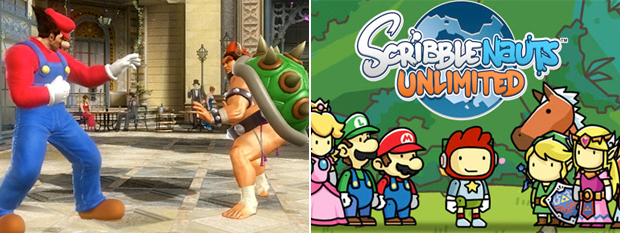
Nintendo’s interest in allowing third-party publishers to access its characters has been through its ups and downs. With each great success such as Soul Calibur II on GameCube came sales disappointments such as the EA partnership. Whether Nintendo and third parties will be greeted by success with similar partnerships on Wii U remains to be seen, but one thing is certain: it makes for some very fun fan service.


